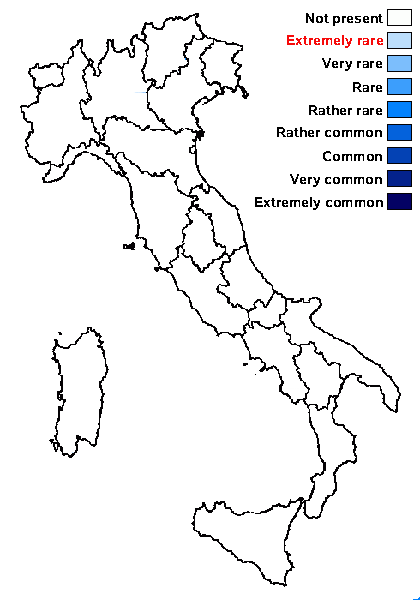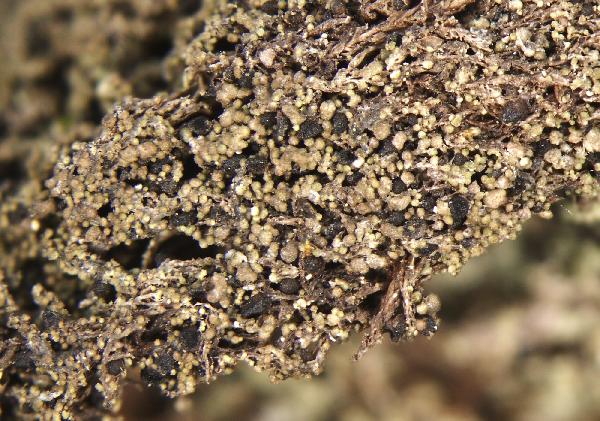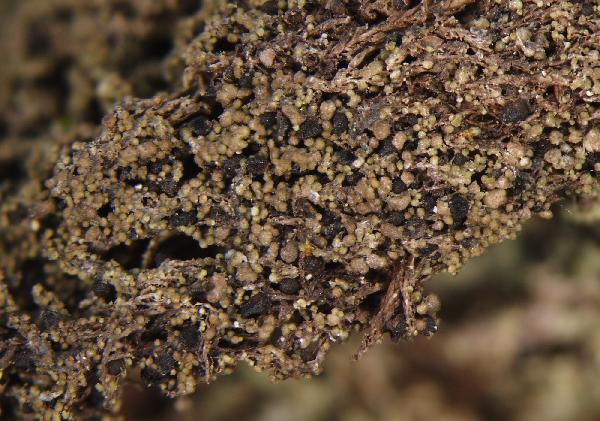Agonimia borysthenica Dymytrova, Breuss & S.Y. Kondr.
Öst. Z. Pilzk., 20: 25, 2011.
Synonyms:
Distribution:
Description: Thallus crustose, episubstratic, rather thick, granular, greenish grey to dark grey, consisting of convex, rounded to vertically elongate, swollen, sometimes partly confluent, 0.6-0.8(-0.9) mm wide goniocysts. Cortical cells of goniocysts 5-10 μm thick, often with small papillae. Perithecia black, matt, ovoid or pyriform, with a short smooth neck and a pale top, sessile to 1/3 immersed, 0.17-0.22(-0.25) mm across (in section), smooth throughout. Exciple distinctly 2-layered, the outer layer dark brown, 11-30 μm thick, the inner layer pale brown to colourless, 12-60 μm thick; involucrellum absent; hymenial gel I+ blue; hamathecium of periphyses and periphysoids, interascal filaments absent. Asci 8-spored, clavate, thin-walled, fissitunicate with a very thin exoascus, surrounded by a hemiamyloid gel. Ascospores muriform, hyaline, ellipsoid, (33-)40-55(-75) x (15-)18-24 μm. Photobiont chlorococcoid. Spot tests: K-, C-, KC-, P-, UV-. Chemistry: without lichen substances. Note: a species of the A. allobata-group, described from the Ukraine, with a record in the Alps (Southern Switzerland), found on mosses and mossy bark of old deciduous trees, especially Quercus and Fraxinus, in humid-shaded old-growth forest stands; to be looked for in the Italian Alps. For further details see Dymytrova & al. (2012).
Growth form: Crustose
Substrata: bark
Photobiont: green algae other than Trentepohlia
Reproductive strategy: mainly sexual

Predictive model
Growth form: Crustose
Substrata: bark
Photobiont: green algae other than Trentepohlia
Reproductive strategy: mainly sexual

Predictive model
 INDEX FUNGORUM
INDEX FUNGORUM
 GBIF
GBIF



